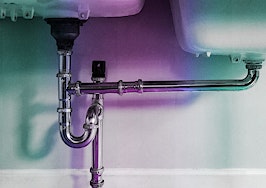 We want to help you make more money — right now. All month, go Back to Basics with Inman as real estate pros share what’s working now and how they’re setting up to profit in a post-pandemic world.
We want to help you make more money — right now. All month, go Back to Basics with Inman as real estate pros share what’s working now and how they’re setting up to profit in a post-pandemic world.
Whether gas or electric, vented or non-vented, dryers operate on the same principle — air is drawn into the dryer drum from the outside and heated. Using a pulley system, a simple motor rotates the drum to move the clothing and distribute the heated air to dry the clothing.
Dryers and washers are responsible for almost 16,000 household fires, according to the National Fire Prevention Association. Ninety-two percent of the fires are caused by dryers, most of which are preventable. The following precautions, all of which are simple, will help keep residential dyers safe.
The first and most obvious safety step is to be certain that the dryer is installed by a professional. Regular servicing will maintain the dryer in good working condition. When in use, dryer drums can reach temperatures of 500 degrees, which is why cleaning the lint filter and the vent is important to prevent fires.
Venting the air from the dryer after it has dried the clothing requires ribbed flexible metal venting, which must be kept clear to ensure that the air can exit easily. The air exhaust pipe needs to be kept clean and clear of lint (which is very flammable).
It is essential to remember to clean the lint trap after every use of the dyer to prevent buildup and potential fires. If the dryer uses gas to provide the heat source, you have to maintain the gas line to prevent leaks.
A clue that the dryer vents or venting hose is clogged and not performing is the length of time required to dry clothing. A clear hose and vent will keep the dryer running efficiently.
The items you put in the dryer can also cause fires. Any item that has alcohol, gasoline or other flammable compounds should not be put in a dryer. Plastic, foam or rubber items are also not suitable for use in a heated dryer. The cool setting will prevent fires for any plastic or foam items.
A proper dryer installation requires the correct plug and a 220V electrical line. Since 1996, the National Electric Code (NEC) began requiring a four-conductor outlet with a separate ground. This helps prevent shocks and fires. To be code-compliant, all newly installed outlets for dryers must be compatible with four-prong grounded dryer cords.
Another obvious precaution, which is good advice for any home appliance, is not to leave the dryer running while you are not at home or while you are sleeping.
Dryers require venting to remove the used, cooled air, and the lint and fibers from the dried items, a byproduct of using a dryer. A non-venting or ventless dryer, often used in apartments or spaces that do not permit exterior venting or where it’s too expensive to vent to the outside, makes use of a closed-loop heat exchange system that conserves and reuses hot air.
Advertised as “gentle and effective” the system removes moisture from clothes at a 50 percent energy savings over conventional vented dryers. The time required to dry clothing is longer, and the amount that will fit into the dyer drum is less than a conventional dryer.
A heat pump dryer uses warm air to dry clothes, rather than warming up cold air, reducing the amount of energy needed to dry clothes. It’s important to have airflow around a ventless dryer, and if the dryer is in a closet, you have to make sure to keep the door open when it’s in use. In contrast, a vented dryer pulls air from the room, heats it in the dryer drum, and then expels moisture and lint into the exhaust hose.
Larger, side-by-side washers and dryers are common in larger residential spaces. Smaller stacking units are made for apartments and multiple housing units. The dryer, which is lighter, is always stacked on top of the washing machine and may have the option of being attached to the wall by using brackets.
While dryers are convenient and perceived as standard equipment in housing in today’s market, clothing will last longer and maintain both color and body by not being machine-dried.
Hanging clothing to dry, whether indoors or out, while inconvenient and time-consuming, is better for the environment and less expensive than the price of power required to operate a dryer.
It is important for agents to be fluent in the pros and cons of common household appliances when discussing housing options with buyers and sellers. Most buyers consider modern laundry appliances as a standard issue when purchasing a home.
Gerard Splendore is a licensed associate real estate broker with Warburg Realty in New York. Connect with him on LinkedIn.













